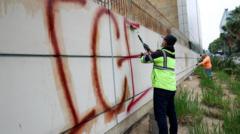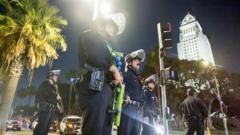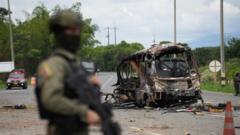Experts highlight three key lessons from international protests as the situation unfolds in California.
Protests Erupt in Los Angeles Amid Immigration Raids

Protests Erupt in Los Angeles Amid Immigration Raids
Tensions escalate as Los Angeles faces public outrage, mirroring global protest patterns.
Los Angeles is currently engulfed in unrest, reminiscent of international protest movements, as demonstrators react violently to a series of recent immigration raids launched by the Trump administration. The administration's heavy-handed response, including calling in the National Guard and military, has exacerbated tensions. By Tuesday, 700 Marines and 4,000 National Guard troops were deployed to manage the turmoil.
Images surfacing from the protests show confrontations between police and demonstrators, with protesters hurling rocks and police responding with tear gas. Scholars observing these civil rights movements suggest that the narrative unfolding in Los Angeles aligns with historical patterns seen globally. A common theme is that severe government responses to initially peaceful demonstrations often lead to aggravated clashes.
Experts underscore that the optics of these encounters—images and videos shared across social media and news outlets—play a critical role in shaping public perception. As such, the way governments respond can either strengthen or weaken their authority amid civil unrest.
Here are three crucial takeaways from international protests that may shed light on the events in Los Angeles: First, government crackdowns create powerful visual narratives that influence public sentiment. Secondly, historical precedent demonstrates that heightened state responses often escalate violence on both sides. Lastly, leveraging unrest can sometimes pave the way for leaders to impose stricter controls under the guise of maintaining order.
As the situation develops, observers will be keenly watching the dynamics between the protesters and the state, hoping to find insights that echo the lessons learned worldwide.





















